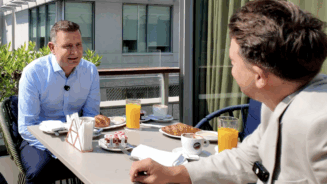Aviva Investors argues we have now entered a cutting cycle with the BoE, ECB and Federal Reserve all expected to continue cautiously lowering interest rates as we head into 2025, according to the firm’s latest quarterly House View.
The asset manager notes that while the cycle looks to be synchronised, it is important to note that central banks are at pains to emphasise that they remain data dependent – and this could see a degree of divergence across 2025.
Policymakers are rightly cautious and careful; fiscal uncertainties and geopolitical tensions are also keeping them on alert. Importantly, developed markets’ central banks are likely to keep rates restrictive for a while, steadily moving back towards neutral, while a negative shock will be needed for policy to become stimulative.
Regarding global growth, the asset manager predicts that this will slow slightly to around 3.1% for 2024, marking a small decrease on the 2023 figures of 3.3% growth, whilst the firm expects a similar increase of 3% in 2025. Real interest rates remain firmly positive for the time being, and this will continue to put some downward pressure on investment and rate-sensitive sectors such as housing and credit-fuelled consumption.
The global “soft landing” is quite heterogeneous as the U.S. and India outperform the other major economies; the U.S. is likely to grow faster than last year by a touch, clocking in a 2.6% expansion, and India will grow at nearly a 7% clip, according to consensus. Both have been steadily revised upward through the year, as most forecasts proved erroneously pessimistic. For next year, a lot will depend on the U.S. election and its impact on taxes, spending and regulation.
Growth in the Euro Area is expected reach around 1% this year, and be just below 1.5% in 2025, dragged down by Germany’s woes while Spain and Greece outperform.
The UK has found political stability, but its new government has yet to implement tax, regulatory, and spending policies, while the BoE is waiting for sticky inflation to abate after briefly achieving its 2.0% CPI target. GDP has recently surprised positively, but the risks seem skewed to the downside.
For emerging markets, the soft landing is a relief, with a troughing in commodity prices and the apex of bond yields ushering in a more benign landscape, especially after the battering that markets took from various election results through the past year. Tariffs, sanctions, and trade restrictions remain a threat, especially if ex-President Trump is re-elected and follows through on some of his more extreme rhetoric.
However, the macro backdrop is more supportive with a weaker dollar, lower rates, and many countries benefitting from better terms of trade. Positioning and sentiment are starting from very low levels, especially after the mid-year carry trade unwind, which crushed “carry” positions in EM, as well as Yen bears, Nikkei bulls, and vol sellers. While it validated earlier concerns about market fragility, the episode came and went quickly, and without spiralling into anything traumatic.
In Asia, Japan’s 2024 growth may print close to zero, but this has to do with some base effects from late 2023; underlying growth is a little over 1% and that steady progress should be expected for 2025 as well – enabling the BoJ to swim against the current and raise interest rates further. Finally, despite recent stimulus measures, China is in a structural slowdown and after straining to get to 5% growth this year, might slow further to around 4% next year.
With regards to asset allocation, Aviva Investors remains constructive on equities, but with expected bouts of renewed volatility, and has dialled back its overweights, favouring the US’s powerful growth drivers and Europe’s compelling valuations. Government bond yields are lower but have diversification benefits in case growth fears intensify, now that central banks are running free; the US and the UK are favoured for duration, but Japan remains an underweight. Credit has been a steady performer and assuming spreads are rangebound, High Yield is preferred to Investment Grade, though both asset classes, as well as Emerging Markets, are likely to turn in similar and decent risk-adjusted returns.
Michael Grady, head of investment strategy and chief economist at Aviva Investors, said: “As we head into the last quarter of 2024, growth has held up okay and inflationary pressures have diminished, leading to the major developed market central banks firing the starting gun on an interest rate cutting cycle. We expect a synchronised cutting cycle across major markets over the next 6-12 months.
“In the short to medium-term we see largely stable growth, and importantly, credit spreads and lending conditions also steady. Earnings have troughed and the tech boom, driven in large part by AI but accompanied by biotech, energy transition, electrification, and defence, are brightening the outlook.”





